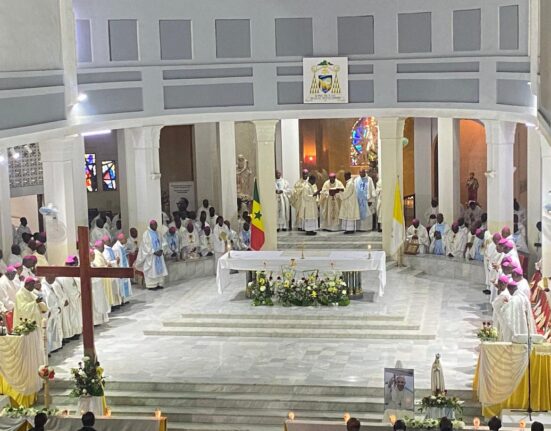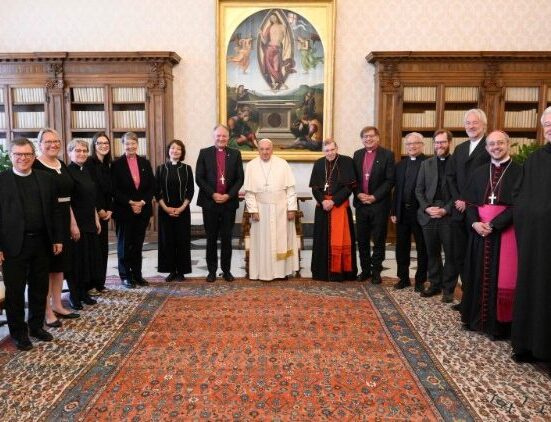THE ERECTION OF PROPAGANGA FIDE 400 YEARS AGO (22ND JUNE 1622 – 22ND JUNE 2022)
BY FR ANGELO CHIDI UNEGBU (22/06/2022)
1) The Church of Christ that used to be an object of scorn and persecution in the first 3 centuries had by the 15th century become so powerful that the two most powerful kings of the time, of Spain and Portugal, depended on her for expansion and conquest. These authroties were granted through the papal BULLS. Furthermore, the church in what was known as Padroado/patronato concordance gave the kings the permission to take the Christian faith to every nation that they conquered.
2) Padroado and Patronato were therefore forms of church-state relationship in which the state played an active role in the administration and support of the church, developed extensively in the colonial empires of Portugal and Spain. This agreement so to say gave the kings the authority to supervise the missions of the church including the appointment of bishops.
3) The granting of these privileges was principally initiated by Pope Martin V (1417-1431), who in his bull, Sane Charissimus of 4 April 1418, granted patronage to Portugal for overseas mission. The patronage was reinforced by Pope Nicholas V (1447-1455) in his bull, Romanus Pontifex of 8 January 1455, which was directed towards the conversion of African ‘Negroes’. Africa, therefore, came under the Portuguese Padroado.
4) At the end of the 15th century, Spain requested Pope Alexander VI (1492-1503) to also confirm its right of jurisdiction over the recently discovered America as it did to Portugal. This request was positively attended to with the republication of the bull, Inter Caetera by Alexander VI on 3 May 1493, which confirmed her right of possession over the land discovered by them and on those yet to be discovered by them in the western ocean.
5) These demarcations having been all spelt out, the pope issued more bulls for the missionary evangelisation of these territories. The first in this regard was the bull, Piis Fidelium, issued on 25 June 1493. In this bull, they were granted vicarial power to appoint the missionaries who were to go to the Indies and various privileges to the inhabitants of the lands discovered. To broaden the rights of ownership by Spain and Portugal, another bull was issued three days later, 28 June by the same name Inter Caetera. On 2 July 1493, the bull, Eximiae Devotionis granted pleno jure to all the privileges enjoyed by the Portuguese.
6) The bull, Dudum Siquidum of 25 September 1493 annulled the previous concessions on land ownership and made it unconditional and unlimited to include also India. By the treaty of Tordesillas on 7 June 1494, Brazil was ceded to the Portuguese. As a follow-up, Alexander VI, by the bull, Cum Sicut Magestas of 26 March 1500, conferred to the king of Portugal the authority to appoint apostolic commissars and extended it to the new world. In the same vein, on 28 July 1508, the bull, Universalis Ecclesiae of Julius II (1503-1513) gave the king of Portugal the right in perpetuity to grant permission for the construction of churches and to appoint persons for the offices and benefices of the cathedrals, collegiate churches and monasteries and so on. The bull indicated also that the presentations for the benefices decreed in consistory were to be made to the pope and other bishops.
7) On 12 June 1514, Pope Leo X issued another bull, Pro Excellenti Praemanentia, and erected the diocese of Funchal in the Madeira Islands, and to this were attached India and Brazil. Moreover, with the bull, Praecelsae Devotionis of 3 November 1514, Leo X confirmed the privileges given by Nicholas V and Sixtus IV and extended them to unknown lands. Again, the right of presenting the candidate for the office of the bishop was allotted to the king of Portugal. In line with this, by the bull, Aequum Reputamus of November 1534, Pope Paul III (1534–1549) erected the diocese of Goa and gave it to the patronage of the king of Portugal.
8) The most outstanding feature of this missionary activities were the racial discrimination or apathy against the training of the natives as priests, mainly in the missions of Latin America, Asia, China and Africa. Recent studies on this question unanimously point out that this attitude was based on the popular belief by missionaries that the stigma of paganism could be washed out only after centuries of contact with Christianity. In the Spanish American mission, natives or converts were outrightly excluded from becoming priests. After 170 years of mission in Madura by the Portuguese Jesuits, not a single Indian was raised to the priesthood.
9) In the Spanish American mission, natives were outrightly excluded from holy orders. Along with the descendants of Muslims and persons sentenced by the Inquisition, the First Council of Mexico (1555) banned, without exemption, the Amerindians (American Indians), Mestizos (half castes), and Mulattoes from the priesthood. In 1585, the Third Council of Mexico modified the law, allowing the Mestizos to be admitted with ‘extreme caution’. By 1591, the Second Council of Lima renewed the general prohibition of 1555 and decreed outrightly that no Amerindian should be admitted to the priesthood. These prohibitions were always strictly maintained.
10) Owing to the Padroado and Patronato concordance, the papacy did not interfere in the whole affair and when it did intervene, it was always in support of the Iberian Crowns, Portugal and Spain. Indeed, the Padroado and Patronato became strong barriers in the formation of indigenous hierarchy or native priests.
11) By the beginning of the 17th century, the excessive use of the rights of patronage granted to the crowns of Portugal and Spain became a matter of serious concern for the papacy. Hence the enthusiasm, which inspired the Holy See to grant these privileges, gradually began to wane. It became clear to successive popes that these privileges, which amounted to a monopoly of ecclesiastical patronage, were in all respects highly inconvenient to and subversive of papal authority. As a result of this excessive control of power by these crowns, coupled with the conspicuous lack of unity and collaboration among various religious orders, the papacy decided to take over the direction and supervision of missions.
12) This led to the formal institution of the Congregation for the Propagation of Faith (Congregationis de Propaganda Fide) by Gregory XV on 6 January 1622. Exactly 400 years ago, on 22 June 1622, the congregation was erected by the bull, Inscrutabili Divinae. The bull granted the congregation full, free and sufficient authority, faculty, and power to perform, manage, treat, do, and execute all matters whatsoever pertaining to the propagation of the faith throughout the world.
13) The new congregation, The Propaganda Fide, was not only opposed by these kings, but also by different religious orders, who felt that the privileges and faculties granted them by former popes were about to be taken away or, at least, infringed upon. The regular superiors of the Franciscans, Dominicans, Carmelites and Jesuits insisted on the rights to nominate their own vicars apostolic, give faculties, transfer and instruct their missionaries.
14) Beginning from 1623, Rome issued more decrees in order to command obedience from the religious orders or at least to have them under their control. In order to better enforce the decrees of the congregation, Pope Urban VIII, the successor of Gregory XV, legislated that the decrees of the General Congregation of the Propaganda Fide have the force and value of Apostolic Constitutions whenever they are issued by the prefects and subscribed by the secretary. Hence the congregation came to acquire a true legislative power.
15) On 1 August 1627, the pontiff issued the bull, Immortalis Dei Filius, which erected the Collegium Urbanium (Urban College) for the training of secular priests from all over the world to take care of their vast missions and also for the training of indigenous clergy especially from the mission lands. The seminary also served the purpose of acquainting the congregation with the real situation of things in mission territories, for each alumnus of this college was bound to send reports each year about the realities of mission in their areas. More so, the seminary became a way to counteract the Padroado and Patronato missionaries’ poor rating of the natives as being unfit for the priesthood.
With the Propaganda Fide and the Urban college properly put in place, the Church was able to reclaim the authority given to her by Christ: “go and make disciples of all nations”. Matthew 28:19. In 1967, the congregation was renamed the Congregation for the Evangelization of Peoples. And on 5 June 2022, it was merged into the Dicastery for Evangelization.











Leave feedback about this